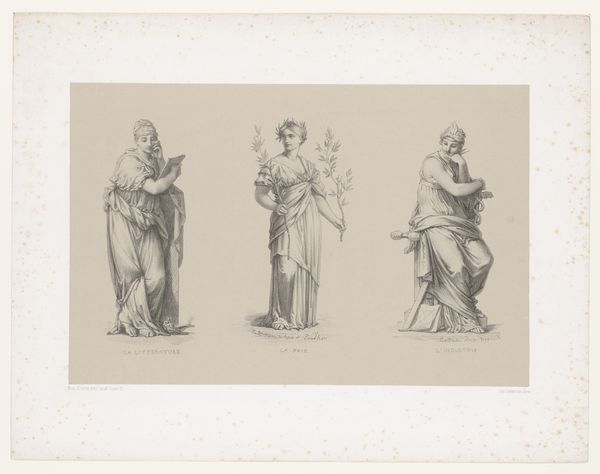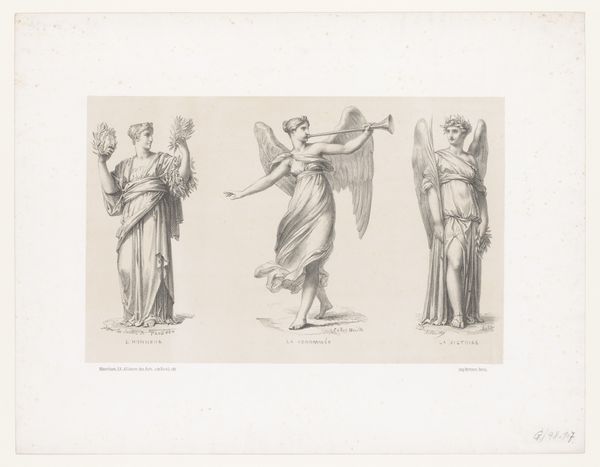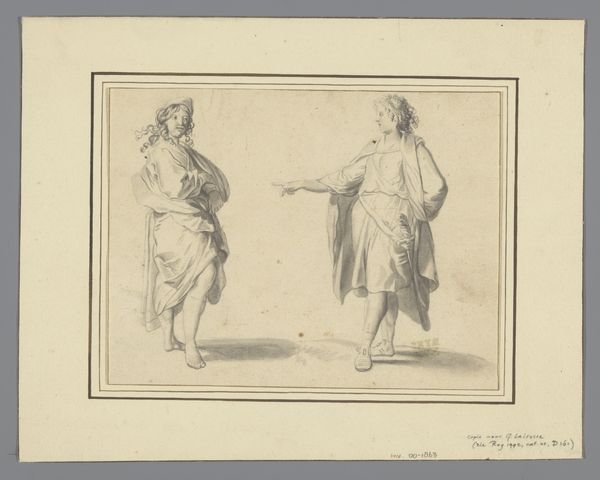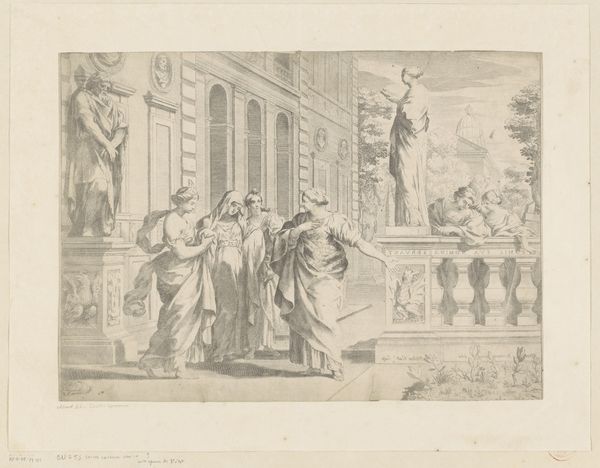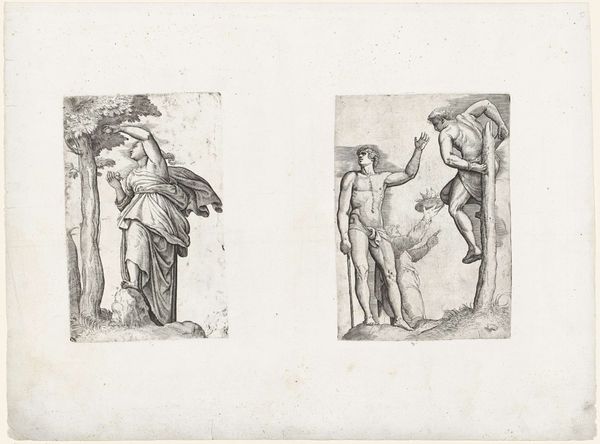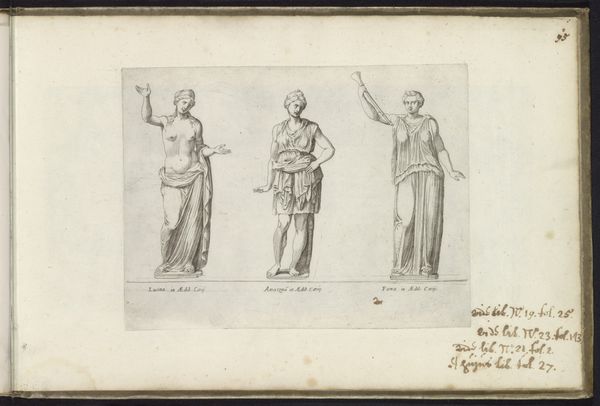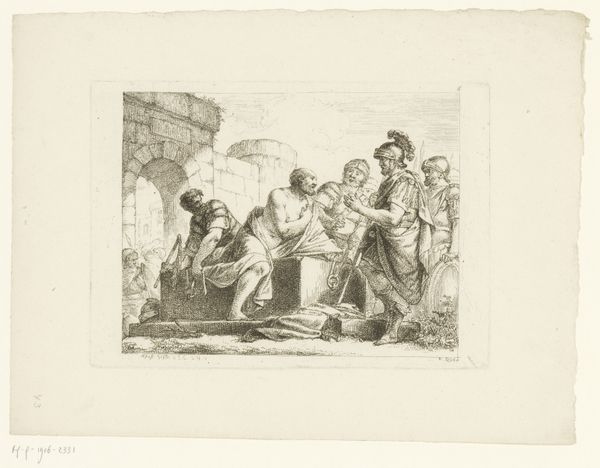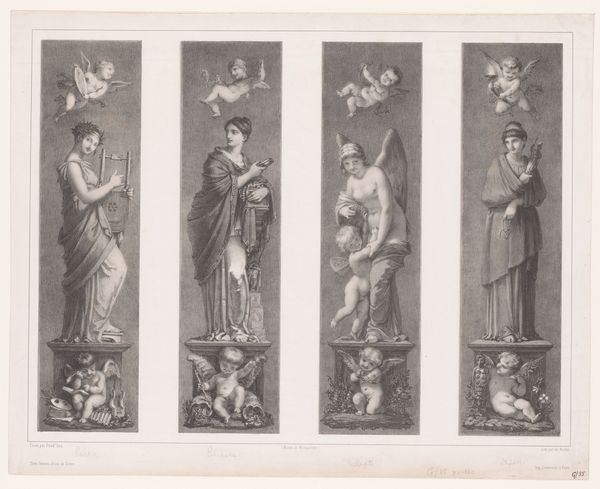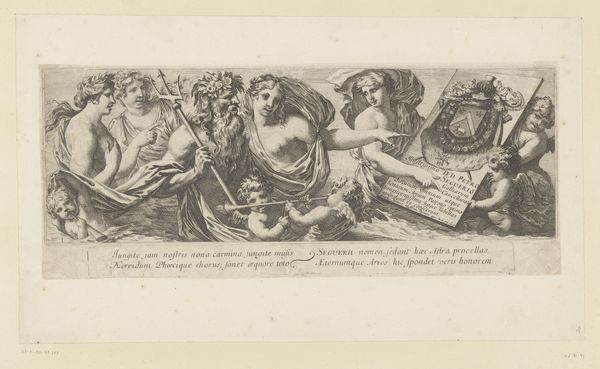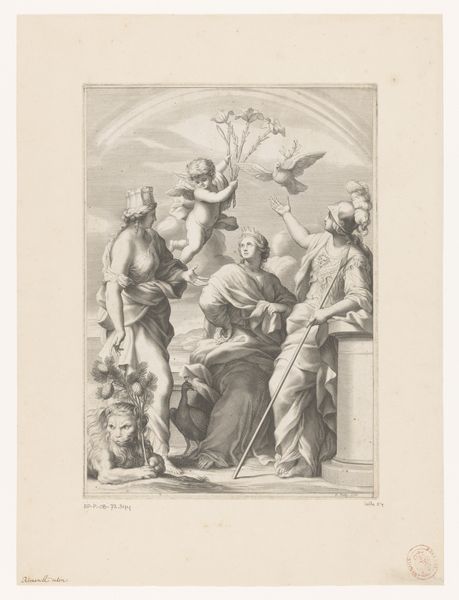
drawing, pencil
#
drawing
#
neoclacissism
#
allegory
#
classical-realism
#
pencil
#
history-painting
#
academic-art
Dimensions: height 301 mm, width 389 mm
Copyright: Rijks Museum: Open Domain
Editor: This drawing from 1855, “Muziek, Wetenschap en Schilderkunst” by Julien-Léopold Boilly, is rendered in pencil. I’m immediately struck by the classical poses and drapery, almost like figures on a Greek vase. How do you read this work? Curator: I see this as a product of its time, firmly rooted in the academic art traditions of the 19th century. We should consider the materials—pencil, paper—not just as neutral grounds, but as commodities within a burgeoning industrial system. Editor: So, beyond the allegorical figures, you're suggesting we examine the very making of it? Curator: Precisely. The choice of pencil, easily reproducible, speaks to a desire for wider dissemination. Think about the labor involved in producing the paper, the pencils, and then the artist's time in rendering such a detailed piece. It wasn’t simply about artistic inspiration. Editor: It's interesting how that changes the perspective. Instead of just an artist divinely inspired, you see a product within an economic and social web. But what about the stylistic choices—the neoclassical style? How does that fit into your materialist interpretation? Curator: The Neoclassical style was itself a conscious choice, a return to a perceived 'golden age' but filtered through the lens of 19th-century production and consumption. Copies, engravings, and prints made the artwork widely accessible, stripping down artistic ideas into material. Editor: I hadn't considered the impact of mass production on art like this. It adds another layer of complexity beyond just the subject matter. Curator: Exactly. Seeing art as the result of a convergence of materials, labour, and social forces can give a more complete picture of the time. I learned a lot re-examining my assumptions! Editor: Likewise, it has changed my mind! I will never view a drawing as something detached from its era. Thanks.
Comments
No comments
Be the first to comment and join the conversation on the ultimate creative platform.
